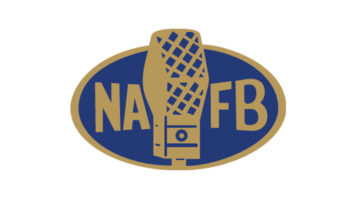Alpha Broadcasting’s New Downtown Digs
Mar 3, 2011 1:00 AM, By Chriss Scherer, editor
A live performance hall highlights the new studios of Alpha Broadcasting

KINK studio
Alpha Broadcasting was operating its six stations from three different studio locations in Portland, OR. Of the former studio sites, Alpha owned one and leased two. Like any split operation, there were always complications operating the multiple sites, and the stations could not take advantage of the built-in redundancies of being collocated. But all that changed at the beginning of 2010.
After looking for a suitable space for the Alpha stations and corporate offices, construction began on Jan. 11, 2010. All the stations moved in by September of that year. In addition to new air studios and offices, the facility includes an impressive performance space that has already hosted a plethora of famous artists.
Studios to start
Alpha occupies space on three floors of its new building. The corporate offices (Alpha only owns stations in Portland) on the 7th floor use 4,000 square feet. The stations all operate from the 6th floor with 30,000 square feet of space. The performance space, called the Bing Lounge, is on the ground floor and occupies 3,000 square feet.

Tech center
All this is on SW 6th Avenue, which is a typical downtown street — except that it is a main transit corridor for the Tri-Met light rail trains. While the central downtown location places the stations in the center of the metro, the traffic noise presented a challenge for Marty Hadfield, the director of engineering for Alpha Broadcasting.
Like any studios, having windows to the outside was important to provide a connection between the on-air operations and the city they serve. Likewise, weather can be unpredictable in the Northwest, and there’s nothing worse than a jock saying it’s sunny outside when it’s really raining.
Double windows were installed in the perimeter studios, but to ensure the train noise would not get into the studios, 3/4″ glass was installed on the inside. The glass panels, typically weighing 350lbs each were also installed in the Bing Lounge.
— continued on page 2
Alpha Broadcasting’s New Downtown Digs
Mar 3, 2011 1:00 AM, By Chriss Scherer, editor

The exterior of Alpha Broadcasting at Pacwest Center
While dual glass panes provide very good noise rejection, they also present a new problem: Keeping the inside surface clean and clear. To keep the views unobstructed, an access panel was included in the window design. The hatch can be removed and resealed as needed for cleaning.
And while attention was given to outside windows, Hadfield was also considering windows between studios — or actually a lack of them.
The studios in the facility are arranged around the exterior of the floor in clusters rather than all being lined up in one section. The separation allows each station to retain its unique identity. Each station has at least a control room and voice tracking booth, and sometimes a talk studio. Rather than install windows between each one, Hadfield wanted to eliminate the potential noise leakage of a large window and use virtual windows: A large-screen monitor and a camera between studios.

KXFD studio
Hadfield was very close to installing the system, but changed his mind while driving on the freeway. A small rock hit his windshield, and while there was no damage, the familiar smack reminded him that when a window fails, it fails open. When a camera or monitor fails, it fails closed. The air staff needs to be able to see room-to-room at all times, and he didn’t want to add a layer of complexity and maintenance by needing to service a video monitor in the middle of the night.
In his research he also noticed that digital closed camera systems have a slight video latency. This delay would likely cause some confusion between the talent and the editors/directors.
Power needs
Redundancy was a key design factor for the facility. The router nature of the Axia system, like all router-based systems, provides an immediate layer of redundancy. The STLs also have redundant links in place. But Hadfield wanted redundancy on power as well, and not just having a generator on standby. His power redundancy scheme starts with all racks and studios having a dual ac power feed. The main feed comes through 180kW diesel generator transfer switch. The secondary feed comes in directly from the power company. This provides emergency power when the power company has a problem, but it also provides an easy way to keep things powered if the generator’s transfer switch needs to be taken offline.
— continued on page 3
Alpha Broadcasting’s New Downtown Digs
Mar 3, 2011 1:00 AM, By Chriss Scherer, editor
Dual 30A twist-lock outlets are placed in each studio and rack. The power feed from the generator side feeds the UPS. The UPS then feeds the A side of an APC Rack ATS (automatic transfer switch) power switch. The B side of the ATS is fed from the raw ac feed. The UPS covers the time to switch to the generator. But if a UPS fails, the ATS switches to the raw power feed.

KUPL studio
In all there are 21 total studio spaces: nine on-air control room/studio combinations, six voice track rooms, four production rooms and 11 news editor/reporter positions. The news positions are cubicles with extra attention to being able to record phone calls or record a feature.
There are three large video monitors in the air studios. All these monitors can take feeds from any of the computer systems, and two of the monitors also have cable TV tuners attached to them. One TV feed also feeds an Axia node so TV audio can be taken if needed. Throughout the facility about half E-V RE27N/D mics and half SM7B mics are used, but there are a few special request mics in use, including a few SM5s. Most mic processing is handled through the Axia system.
While most stations use a T1 for an STL link, there are also 950MHz STLs installed. An equipment room on the 31st floor houses the transmitters. There is also a satellite dish installed on the roof, as well as several receive antennas. An Evertz fiber optic link runs from the 6th floor to the 31st floor, and an RF to fiber converter carries the LNB and the off-air signals to the 6th floor — without any loss. A redundant satellite antenna at one transmitter site also feeds its LNB to the studios via a similar fiber converter, and all satellite receivers reside in the rack room downtown.
The Bing Lounge

The Bing Lounge
The big feature of the facility is the performance lounge on the ground floor. The street in front has a slight grade, which naturally creates an elevated seating area in the back. There is also a control room looking into the lounge.
The large store-front space has instant street appeal for the 165-person theater. But during performances, heavy theater drapes can be pulled over the windows to avoid street distractions and improve the acoustic reflections inside. The same 3/4″ studio glass was installed in the lounge to reduce street noise, and plenty of elastic caulk was used to seal everything. And while outside noise getting in was a prime concern, performance noise getting out was an even bigger one. Just above the Bing Lounge are the corporate offices for Key Bank of Washington and Oregon.
— continued on page 3
Alpha Broadcasting’s New Downtown Digs
Mar 3, 2011 1:00 AM, By Chriss Scherer, editor

The Bing Lounge, located at street level, has played host to acts like Clay Walker and the Doobie Brothers.
The entire ceiling and HVAC ducting for the lounge is suspended with a 5′ space between it and the floor above. The floating ceiling is mounted on shock absorbers and sealed with elastic caulk. The net result is nearly an STC 80 rating of noise isolation from the lounge to the outside, including the offices above.
Several large video monitors are installed along the lounge walls. Some are on the windows facing outward so people on the street can see the performance when the drapes are closed. A 55″ monitor at stage right and facing the street is dedicated for Bing to use at all times.
To feed these monitors and record the performances, three HD video cameras and a Newtek TriCaster video editor, storage and switcher are used. Stage feeds are split to the front-of-house (FOH) mixer and the control room. All the audio and video is transferred to Bing, which archives all the performances.
There is also a green room next to the control room. Rear access is available from behind the building so performers have a more private entrance.

The Bing Lounge control room
The Bing Lounge was the most expensive individual part of the project, costing nearly $1 million. The sound isolation issue in the Bing Lounge was not the only challenge faced during construction. When the floor plans were drawn up, the architects used as-built drawings as the basis of the design. When construction began it was discovered that these drawings were not completely accurate. Some ceiling beams were actually 5″ lower than expected in a few places, so ceiling plans had to be modified. Also, some air ducts were not in the as-built locations, so some wiring paths had to be reconfigured.
The floor plate and building exterior skin had a 2″ gap between them. This gap had to be packed with insulation and then sealed with a rubberized membrane to provide suitable sound isolation.
There was one undocumented element that worked to Alpha’s advantage: Several in-place large electrical conduits (4″) were already installed but not in use, so Alpha used them to save some expense.
Photos by Jeff Allen
— continued on page 5
Alpha Broadcasting’s New Downtown Digs
Mar 3, 2011 1:00 AM, By Chriss Scherer, editor

KXL studio
More About The Bing Lounge
Many of the artists who have performed in the lounge like the space, mainly because it’s acoustically very quiet. It’s not a live room, but rather a very intimate space. The front row seats are 3′ from the stage, which itself is only 8″ high. (The low stage eliminated the need for special ramps and other safety requirements.) Some artists who have performed there: Shawn Mullins, Queensryche, Five for Fighting, Doobie Brothers, Crowded House and Clay Walker.
The build team
Five Alpha Broadcasting Employees were involved in the facility build: Marty Hadfield, Chief Engineer Mike Everhart, Thor Waage, Phil Biehl and Will Price. In addition, four local contract engineers were involved: Matt Green, Todd Leninger, Wayne Anderson and Tim Woods Jr. The general contractor was Ashforth-Pacific.
Equipment List
Studios
Air Tools 6100
AKG C414 B-XLII
Allen & Heath WZ3-20S
APC Rack ATS, UPS
Aphex 230
Audion Labs Voxpro
Axia Element, IP intercom, Powerstation
Broadcast Electronics Audiovault
Broadcast Tools CC-II
Electro Voice RE-20, RE-27N/D
Evertz fiber optic transceiver
Fostex 6301BEAV, PM-1 MkIII
Henry SixMix
OC White 619003BG
Omnirax furniture
Shure SM-7
Tascam CD601MkII
Telos NX12
Yellowtec Mika
Bing Lounge
Clear-com intercom system
Crown CTS1200
Fujinon zoom lenses
JBL SRX712M, VP-7215, VP-7212, VPSB 7118sp
Mackie Onyx 1640 w/Firewire
NewTek TriCaster
Proco MS-82P
Sharp 155″ HD DLP projection system
Sony PMW-EX1R
Soundcraft GB4-40
Dealers
BGS (primary), BSW, SCMS,
Graybar Electric (UPS)
— continued on page 6 with more photos
Alpha Broadcasting’s New Downtown Digs
Mar 3, 2011 1:00 AM, By Chriss Scherer, editor




KXL studio
— still more photos and a floor plan on page 7
Alpha Broadcasting’s New Downtown Digs
Mar 3, 2011 1:00 AM, By Chriss Scherer, editor




6th floor plan. Click to enlarge.







